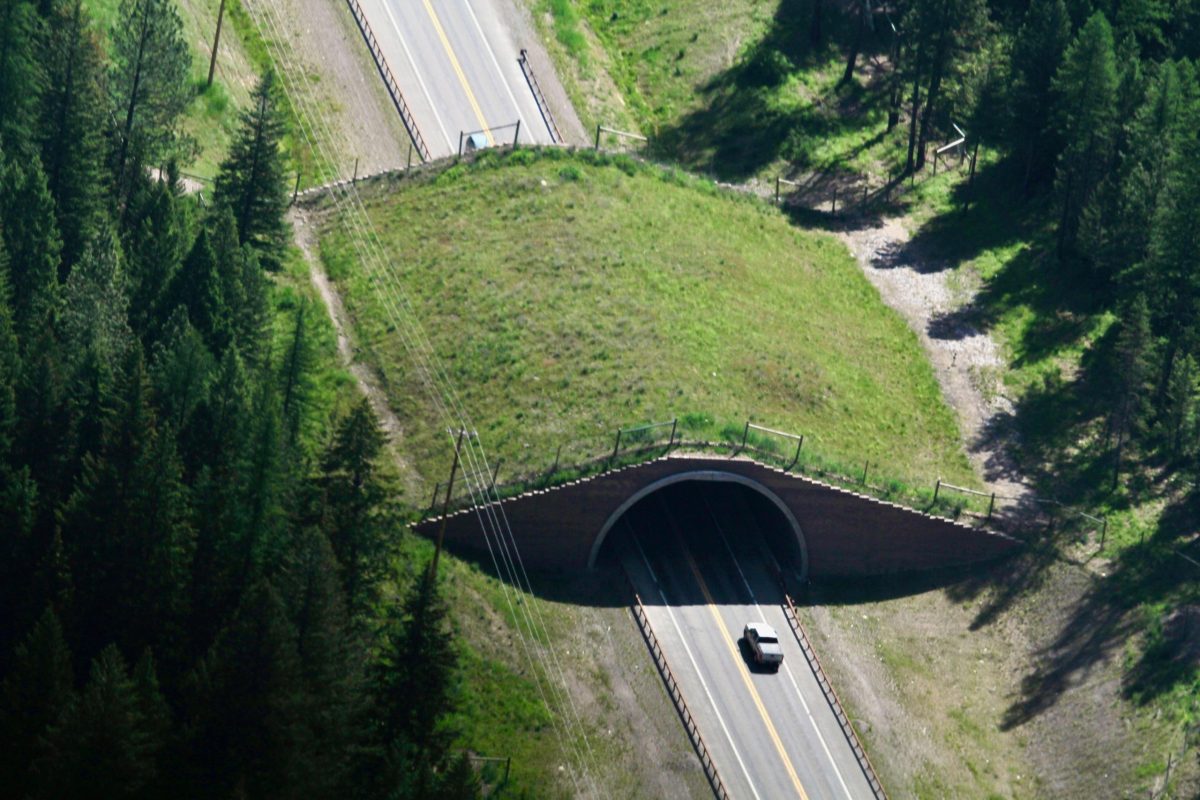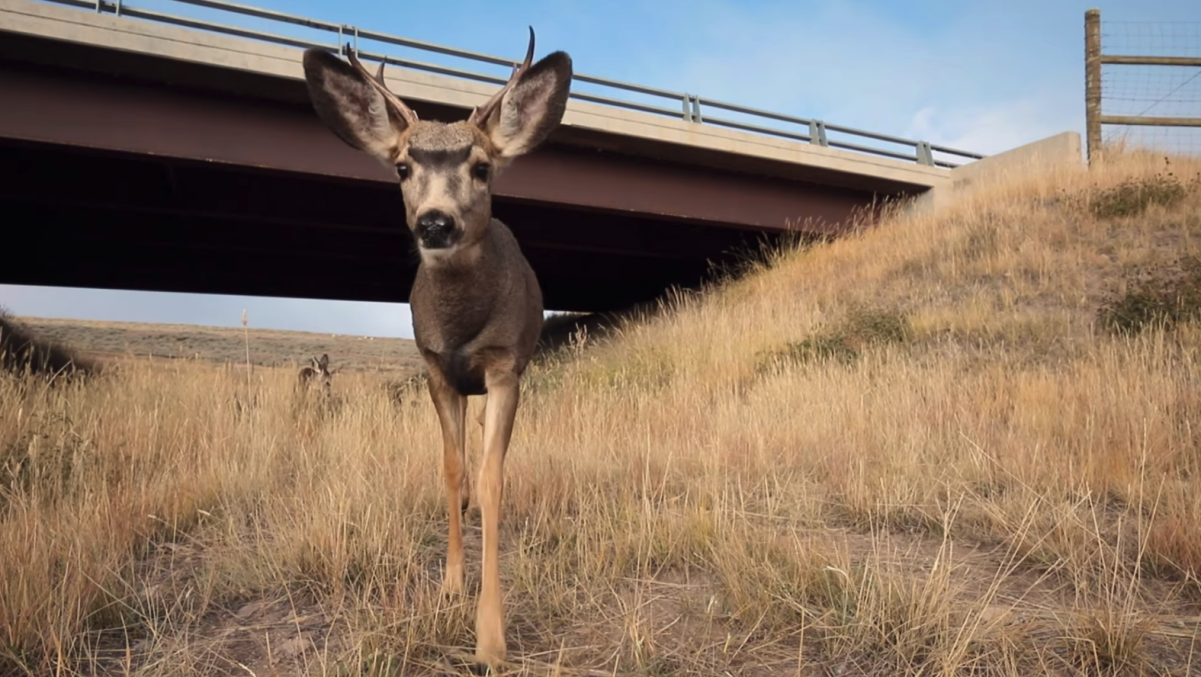Montana’s New Landmark Wildlife Crossing Laws
 | Author:
By Sophie Tsairis, Mountain Journal
Freelance Journalist |
Montana’s New Landmark Wildlife Crossing Laws
Sophie Tsairis
Mountain Journal
Montana has taken a major step toward protecting both wildlife and drivers with the passage of two groundbreaking pieces of legislation this spring: House Bill 855 and House Bill 932. Together, the new laws establish the state’s first dedicated funding streams for wildlife crossings, structures proven to reduce collisions and improve landscape connectivity.
This article by Sophie Tsairis was originally published in the Mountain Journal and republished in the Montana Free Press.
It is published here courtesy of the Mountain Journal (https://mountainjournal.org/)
https://mountainjournal.org/montana-passes-landmark-wildlife-crossing-legislation
Montana currently has the second-highest per capita rate of wildlife-vehicle collisions in the United States. The average driver faces a 1-53 chance of hitting an animal each year and 13% of reported collisions in the state are related to wildlife, according to the Montana Department of Transportation. These crashes pose serious risks to people and animals alike, and cost Montanans tens of millions of dollars annually.
Kylie Paul, road ecologist at the Center for Large Landscape Conservation, a nonprofit creating strategies to solve large-scale challenges like climate change and habitat fragmentation, told Mountain Journal the nonprofit supported the legislation.
“In Montana, we have a lot of roads cutting through intact wildlife habitats and migration routes,” Paul said. “Many are high-speed, low-light and, to some level, still low-traffic highways which help animals still feel safe to move across them.”
Sponsored by Rep. Katie Zolnikov (R-Billings), HB 855 establishes the Fish, Wildlife and Parks Wildlife Highway Crossings and Accommodations Account. Montana FWP will administer the fund, which will support the planning, design and construction of wildlife crossings across the state.
To generate revenue, the account will be funded by sales of a new specialty license plate, expected to raise an estimated $100,000 annually. According to Paul, the plate is not only a financial tool, but a “good education piece” that will help raise awareness about wildlife connectivity and road safety.
This fall, the design for the specialty license plate that will fund the account will be finalized through a public art contest running from mid-July to October.
House Bill 932, sponsored by Rep. Ken Walsh, R-Twin Bridges, builds on that foundation by allocating 20% of Montana’s marijuana tax revenue to a Habitat Legacy Account. Of that, 5% — approximately $500,000 annually — is earmarked specifically for wildlife crossings.
“It’s the first continuous funding source for wildlife crossings in the nation,” Paul said. “ It’s honestly shocking.”
Together, HB 855 and HB 932 provide Montana with both a mechanism to raise new funds and a long-term investment strategy for infrastructure that could last up to 70 years, according to Paul. “Wildlife structures are a high upfront investment,” she explained. “But they pay off in the long run by preventing costly collisions and maintaining healthy ecosystems.”
A 2022 cost-benefit study of mitigation measures along highways for large animal species estimated the average cost of a single deer collision is $19,000, while an elk collision can exceed $73,000 when factoring in insurance claims, emergency response and road damage. Crossings that allow animals to safely pass over or under highways dramatically reduce these accidents.
Wildlife crossing infrastructure isn’t new to Montana. The Confederated Salish and Kootenai Tribes have been leaders in implementing successful crossings, recently securing additional funding from the Biden administration to construct a wildlife overpass on a stretch of U.S. 93 that runs through the Flathead Indian Reservation within the Ninepipe Wildlife Management Area. According to MDT, the U.S. 93 project has 81 crossing structures for fish and wildlife crossings and is the largest wildlife-crossing project in the country. Past projects have largely relied on federal grants and piecemeal funding, a barrier this new legislation helps to overcome.
Paul highlighted the importance of science-based planning and partnerships, noting that Montana has had a regional approach but not a statewide framework or strategy.
Since 2018, the Montana Wildlife and Transportation Partnership, a collaboration between the Montana Department of Transportation, FWP, and Montanans for Safe Wildlife Passage, a group of conservation organizations including CLLC, has laid important groundwork. They’ve developed a statewide planning tool and heat map to help identify priority areas for wildlife crossings, and launched a project program to support public-private partnerships in building them.
With HB 855 and HB 932 signed into law, the state is poised to make meaningful progress in reconnecting landscapes and making roads safer for everyone who uses them, Paul said. However, she added, wildlife structures can cost millions of dollars, and while this legislation is a big step forward, additional funding will still be required to make significant headway.
Article Images
Click on Image Thumbnail(s) to view fullsize image
PhotoCredit: See captions
Image 1 Caption: A wildlife overpass along U.S. Highway 93 in Montana. Across 76 miles, US-93 features 81 fish and wildlife crossing structures.
Photo Credit: Kylie Paul / CLLC
Image 2 Caption: A deer uses an underpass WYDOT installed as part of the Trapper's Point project in 2012. Crossings like this one have reduced wildlife-vehicle collisions by 85% in the project area.
Credit: Wyoming Game and Fish Department
Image 3 Caption: Mountain Journal Logo
Image 4 Caption: Montana Free Press logo



_7.png)